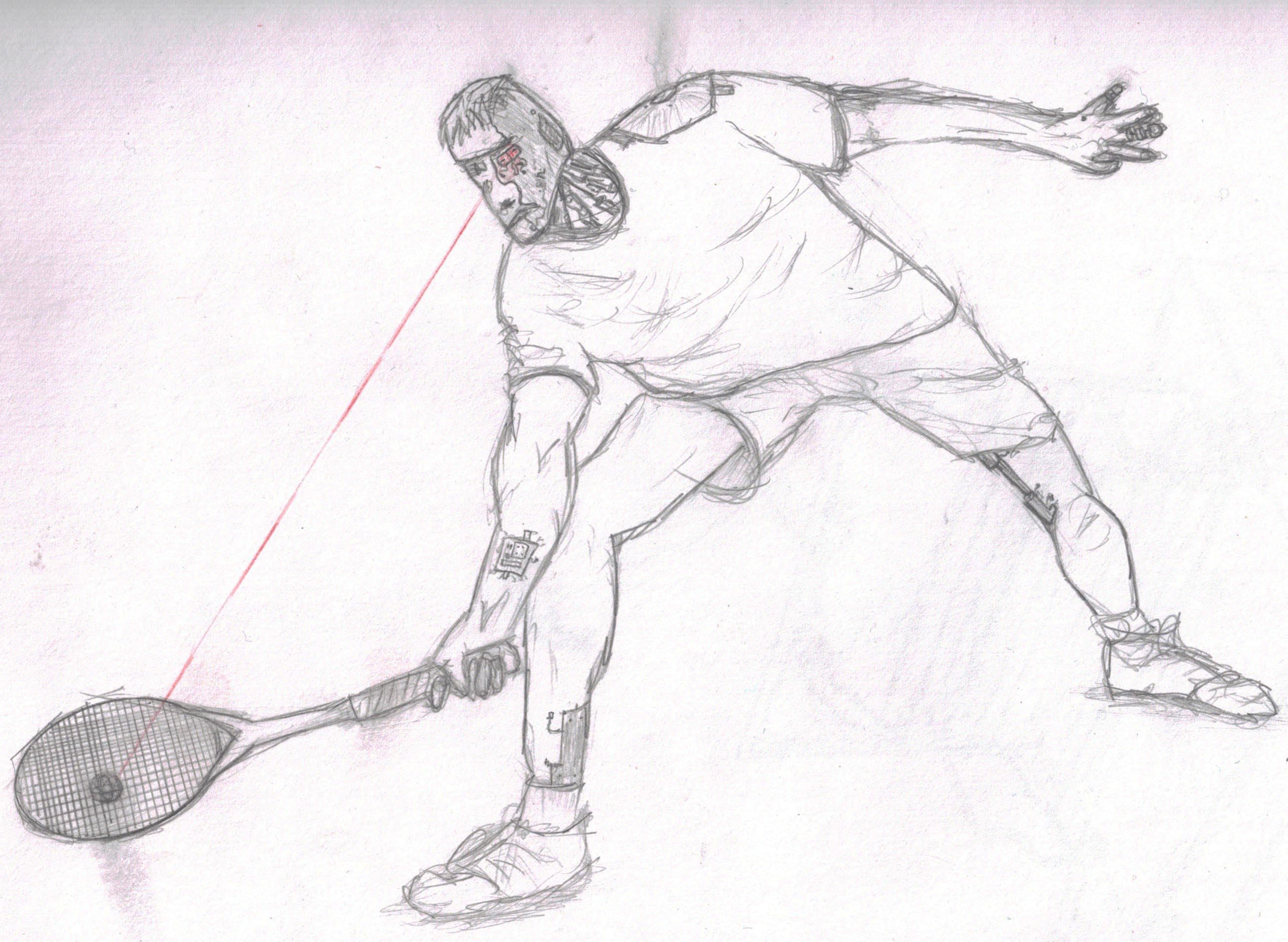Watching the ball is incredibly important in squash but not always as simple as it sounds. Do you ever feel like you just don’t see the ball as early on one side of the court? Is your Volley stronger on one side than the other? It may be to do with your eyes!
The idea of the ‘Radar Eye’ has to be one of my favourite coaching discoveries of 2013/2014 and was shared with me by England Squash High Performance Coach Paul Carter.
As many of you may be aware, the vast majority of people have a preference for one eye or the other; one eye is dominant. In most cases, it is the right eye which is the stronger one, although a significant number of people have a dominant left eye and a small number of people have equally proficient eyes. The impact on squash of the dominant eye can be hugely significant as it is responsible for assessing spatial and positional information to a high degree, which of course you need when hitting a small ball at high speed under time constraint.
I used to relish the Backhand Volley and was renowned for my Backhand Drop Volley but never seemed to be able to replicate my success on the Forehand no matter how hard I tried. I lost count of the number of people who said I needed to Volley more on my Forehand. It wasn’t that I was taking it easy on my Forehand or felt less comfortable. If anything, it felt like I just wasn’t in a position to Volley on the Forehand or never quite prepared.
I used to relish the Backhand Volley and was renowned for my Backhand Drop Volley but never seemed to be able to replicate my success on the Forehand no matter how hard I tried.”
For me, my right eye is dominant by quite some distance and it so happens that on the Backhand my right eye is the one facing forwards, with the left eye in a weaker position and forming my peripheral view, which is all well and good given my right eye is the stronger on. On the Forehand, the opposite was true. My weaker left eye was the one charged with spotting the ball on the forehand and sourcing volley opportunities, while my right eye was wasted in the back. This was enough to ensure I was missing large numbers of opportunities to Volley on the Forehand, which meant I was losing the T-Position and also missing opportunities to increase the pressure on my opponent.
Having a dominant eye is completely normal and not something that can really be fixed and doesn’t need to be in any case! The solution is simple. TURN YOUR HEAD. I have even encouraged some players to take a more open stance, with your body pointed towards the corner, similar to if you were playing a traditional Cross-Court shot, to great effect. This change of positioning allows the dominant eye to become involved in spotting the ball and can be used on both the Forehand or Backhand side depending on which eye is dominant.
This is something I now do myself and it has helped me spot the ball as early as I do on the Backhand and I now have the option to Volley a lot more frequently on my Forehand than before.
If you are not sure you can test which of your eyes is the dominant one using the Dolman Method. Look at a faraway object through a small hole in a piece of paper or similar object using only your left eye. Then repeat the process with the right eye. One of the eyes will usually produce a clearer image and feel easier to focus with, indicating dominance. Of course if both eyes feel fine, you are likely to have co-dominance in your eyes and missing those Volley opportunities may be down to something else!

Leave a Reply